Select a house type:

One of the most common building structures for new homes are contemporary in style, using a range of mixed materials.
While there are differences between styles and structural choices, they generally have a lot of similarities. Starting from the foundation, they’re usually constructed with the slab on ground and reinforced masonry blockwork. Roof choices can also vary in complexity.
Complex roof shapes can pose issues when it comes to extreme weather. There may be water-damage issues due to a lack of efficient drainage.
The addition of low pitch roofs can also be vulnerable to extreme wind compared to steeper roof profiles. Fixings like eaves, plasterboard linings and large windows may also increase potential for water ingress by wind, rain and debris.
Timber frames by their nature are susceptible to ignition while steel frames are not. Burning debris can also enter through gaps and ignite timber framing, interior or decking and roof elements. A timber frame can also shrink from water ingress.

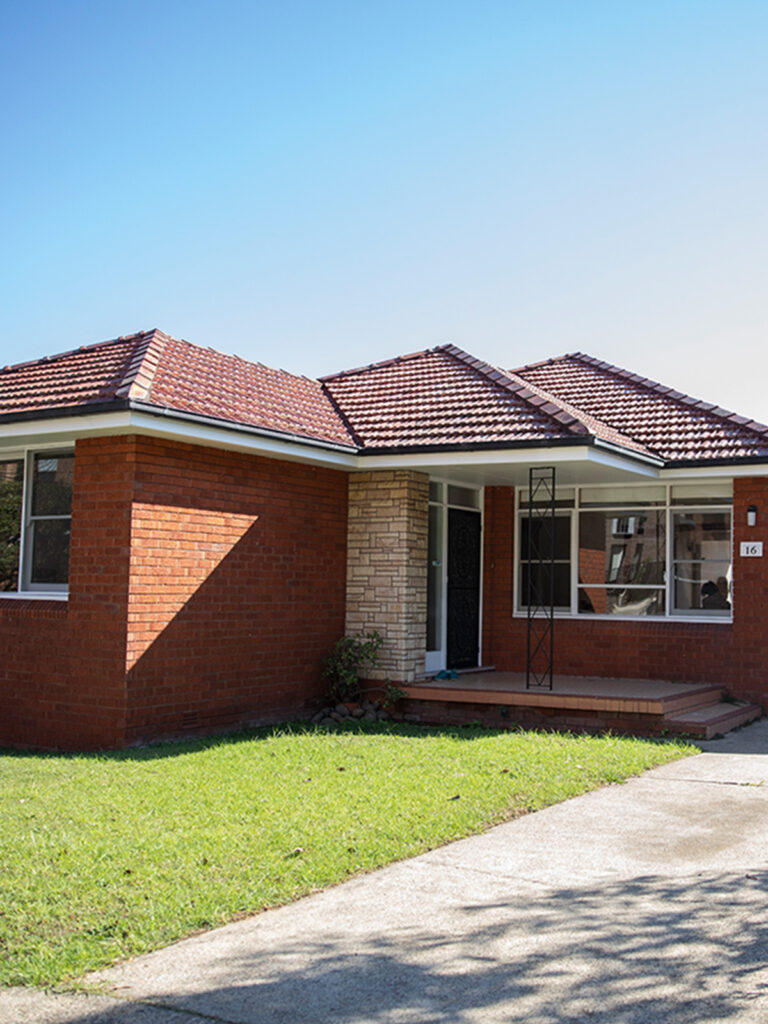
Brick veneer houses typically have exterior walls made of single skin brickwork tied to a timber frame. Older brick veneer houses often need to be kept in good condition to ensure their ongoing endurance.
A tile roof can cause issues for a house if they lack sarking. Sarking can be a key feature for the roof, it serves as a membrane that sits underneath the tiles. Timber frames by their nature are susceptible to ignition while steel frames are not. Burning debris can also enter through gaps and ignite timber framing, interior or decking and roof elements. A timber frame can also shrink from water ingress.

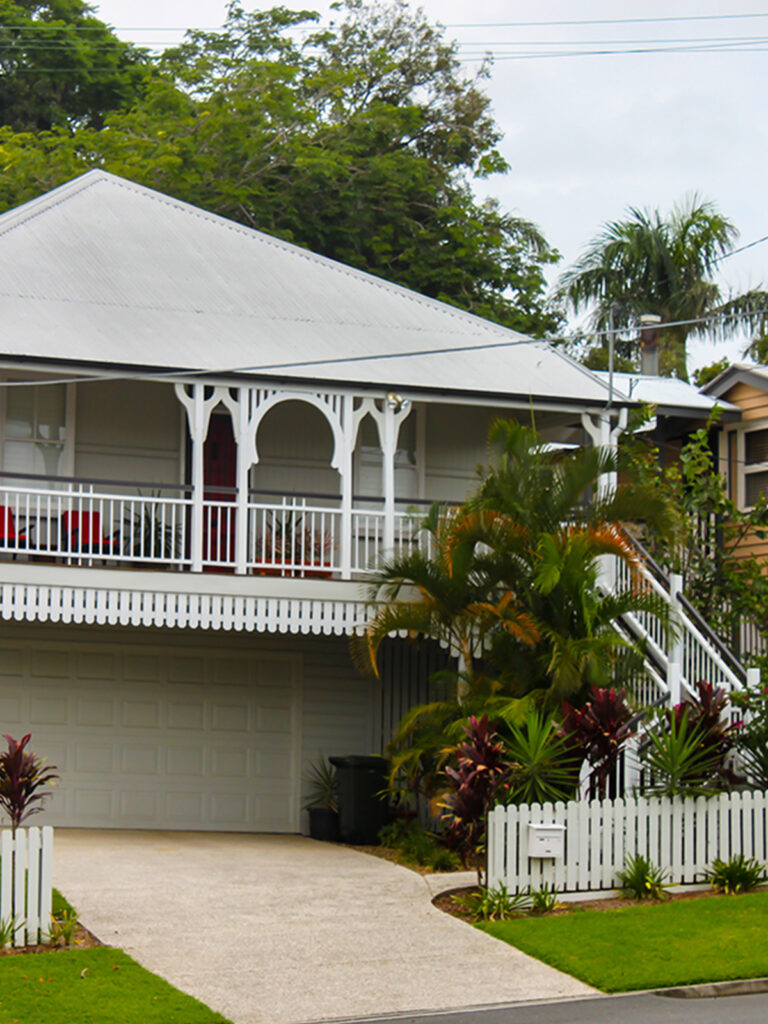
The Queenslander home (typically built prior to the 60’s) has historically been a popular housing choice in the varied climates of Queensland. Queenslander style houses are usually timber-framed, elevated on stumps with timber external walls. Roof shapes include gables, hips or a combination of both.
Older Queenslander houses can be vulnerable to severe damage and water ingress from strong winds and cyclones if aspects of the home, such as retrofitting the roof structure and regular maintenance are not undertaken.
They are also susceptible to bushfires as burning debris can enter through gaps and ignite the framing, interior or build up against walls, frames, decking or roof elements. Debris that is already on the ground or is blown in during a fire also can ignite any timber elements under the house or near the ground.

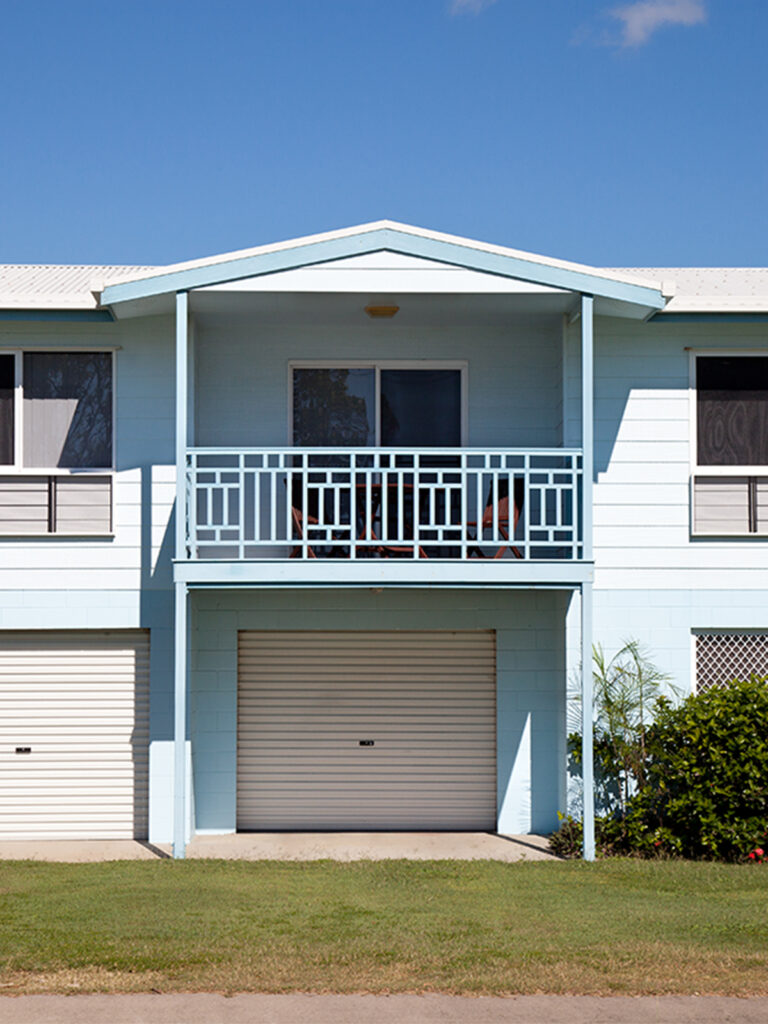
High-set houses often feature large windows and simple silhouettes. Older styles can be identified by their quite flat (very low pitch) roof shapes.
A flat roof can generate large uplift pressures along the edge and across the roof. Many houses built prior to the 1980’s have vulnerable roof structures and commonly require upgrades to reduce risk of damage from severe windstorms. High-set houses occasionally use fibre cement sheets for wall cladding. Fibre cement sheets may be vulnerable to wind driven debris.
These can also be susceptible to bushfires as burning debris can enter through gaps and ignite framing, interior or decking and roof elements. Debris that is already on the ground or is blown in during a fire also can ignite any timber elements or stored items under the house or near the ground.

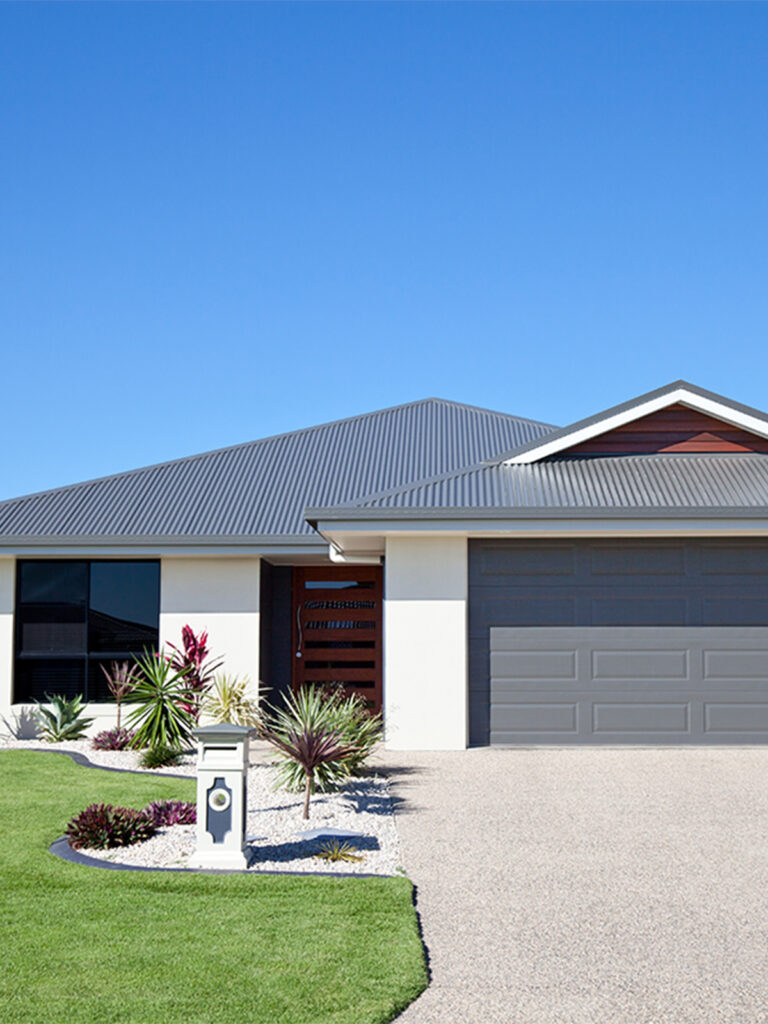
These are most often single storey houses with slabs on ground and were most commonly built post 1980s. Double storey houses are also common and roof shapes can be hip, gable or a combination of both. Roof cladding is usually metal, or tiles and homes feature reinforced concrete blockwork.
Complex roof structures can lead to greater potential for wind-driven rain ingress through valley gutters and other flashings. Internal linings (like plasterboard) also have a high susceptibility to water damage.
A tile roof can cause issues for a house if they lack sarking. Sarking can be a key feature for the roof, it serves as a membrane that sits underneath the tiles. Specialised flame-resistant sarking in combination with metal tile battens can be an effective barrier to burning debris.
These are also susceptible to bushfires as burning debris can enter through gaps and ignite timber framing, interior, decking and roof elements. Debris that is already on the ground or is blown in during a fire also can ignite any timber elements or stored items under the house or near the ground.

From the simple to the complex, see which upgrades can help better protect your home.
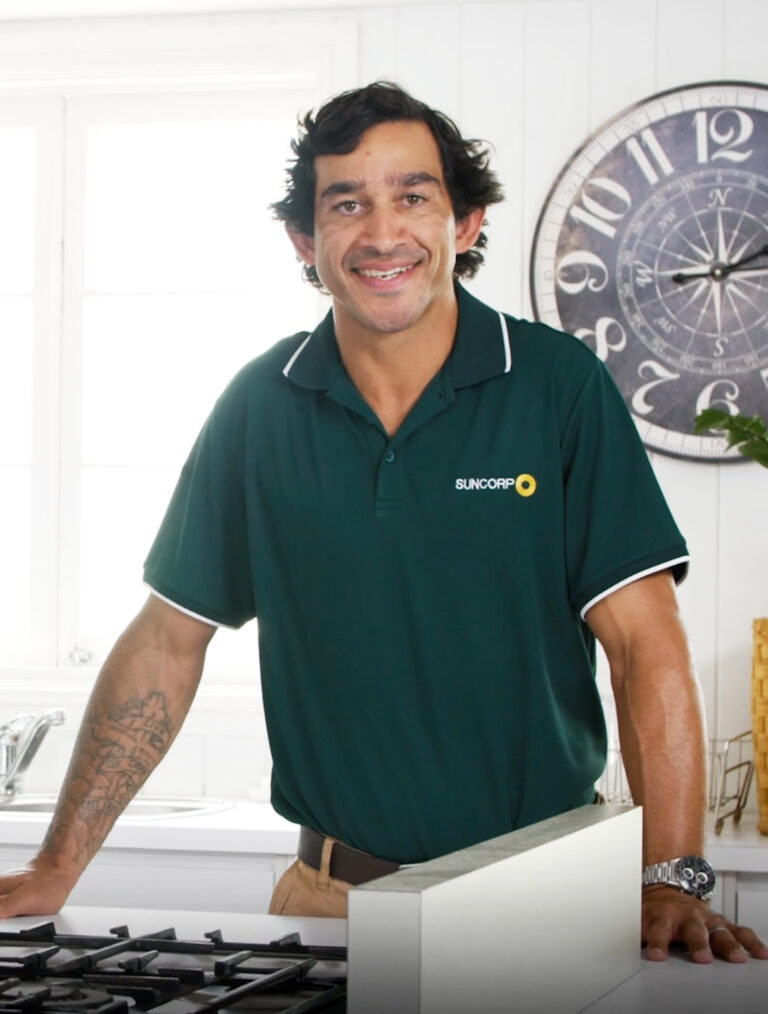
An Australian first for Home Insurance. It’s our commitment to help create more resilient homes. It means that if your home is substantially damaged, we’ll rebuild it stronger with recommended resilience options up to $10,000, in addition to your sum insured, all designed to help withstand severe weather5.
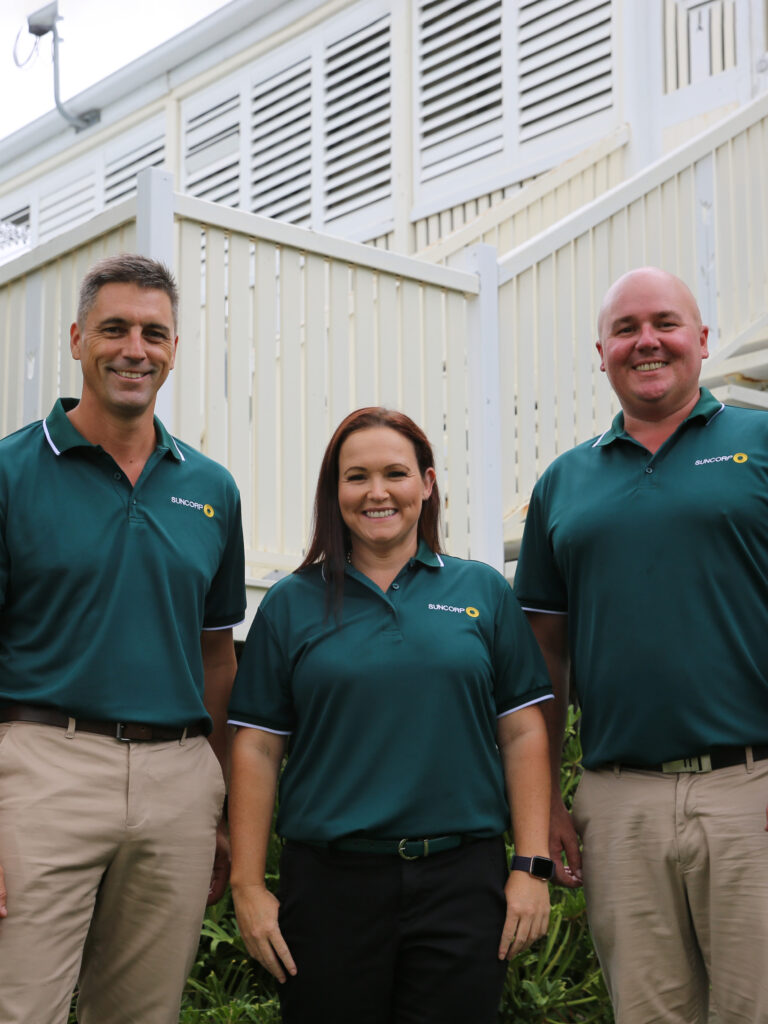
Helping build a more resilient Queensland together.
Insurance is issued by AAI Limited ABN 48 005 297 807 (AAI) trading as Suncorp Insurance. Please read the relevant Product Disclosure Statement before buying any insurance products. The Target Market Determination is also available. The information is intended to be of a general nature only. Subject to any rights you may have under any law, we do not accept any legal responsibility for any loss or damage, including loss of business or profits or any other indirect loss, incurred as a result of reliance upon it – please make your own enquiries.
4. A premium reduction may be available to eligible Suncorp Home or Landlord Insurance customers, with properties above tropic of Capricorn, within 100km from the coast and with certain risk mitigation measures. Eligibility criteria, terms and conditions apply. Find out more.
5. Cover applies to claims with building damage over $50,000 or 10% of sum insured, whichever is highest. Resilience improvements are tiered according to level of cover up to $10,000. Limits, conditions and exclusions apply. Please read the relevant Product Disclosure Statement before you make any decision regarding this product.
COOKIE AND DATA POLICY
We use cookies and other related technologies to improve and tailor your website experience. See our Cookie and Data Policy. This policy provides information about how Suncorp collects and uses data related to your online activity, and how you can choose to remain anonymous.